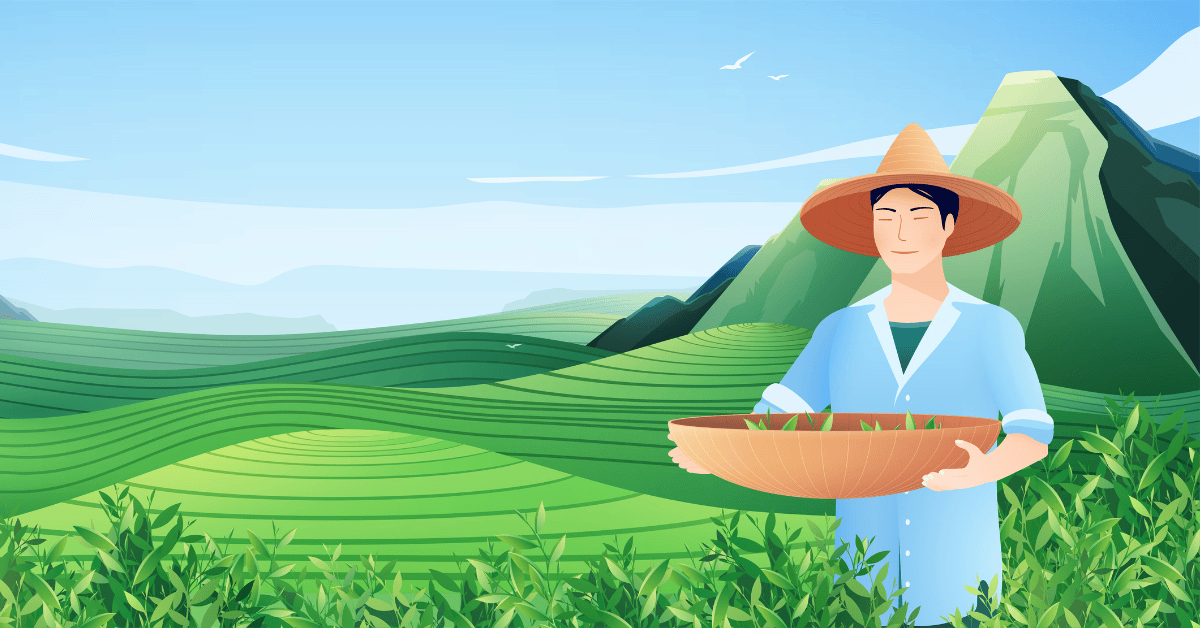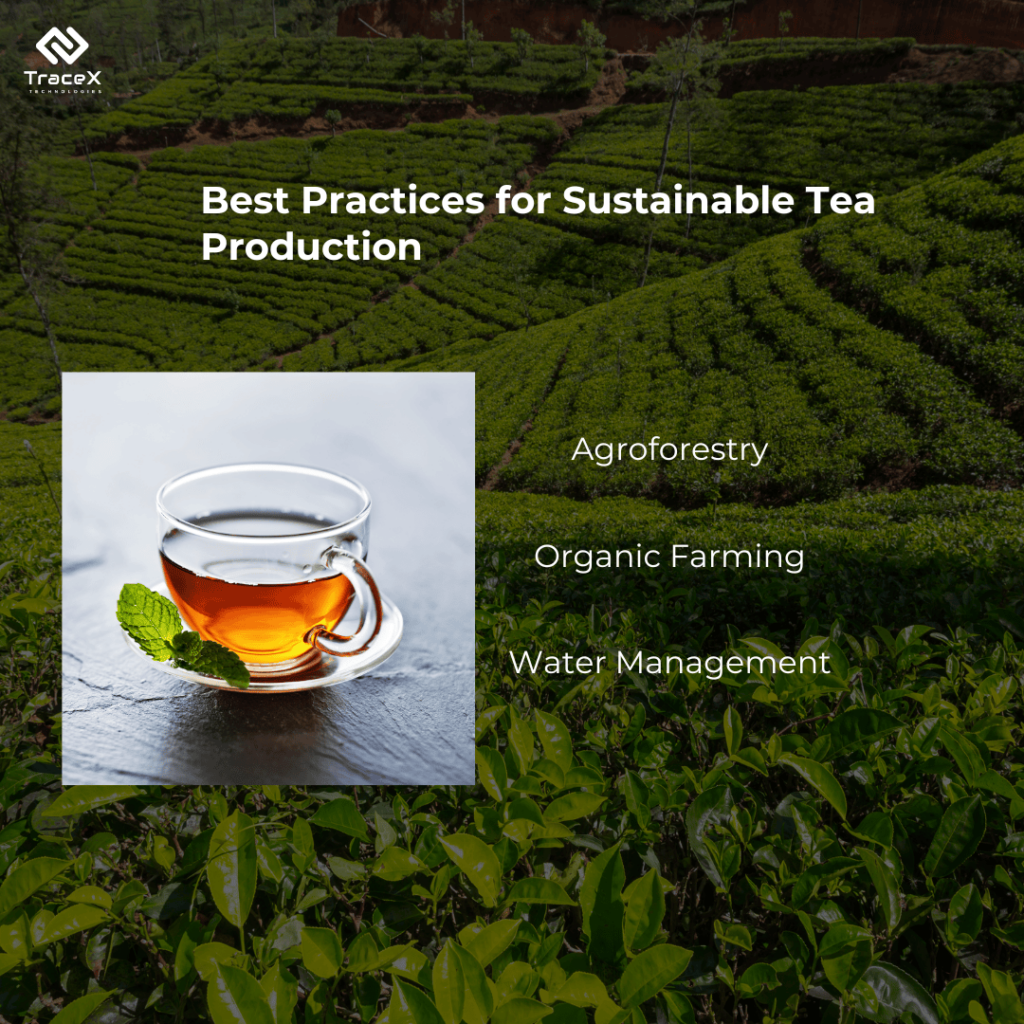Contact: +91 99725 24322 |
Menu
Menu
Quick summary: Explore the complexities of the tea supply chain, from cultivation to retail, and discover how sustainability, traceability, and modern innovations are transforming this global industry.

Did you know that nearly 3 billion cups of tea are consumed daily worldwide? The tea supply chain stands at a crucial crossroads where consumers are increasingly demanding transparency and sustainability. The journey of tea—from the lush plantations where it is harvested to the cups of consumers around the globe—presents both immense opportunities and significant challenges.
According to a survey conducted by Nielsen, 66% of global consumers are willing to pay more for sustainable brands . This shift in consumer behavior is pushing tea companies to adopt traceability practices to meet these expectations.
Yet, as the demand for this beloved beverage rises, so do the complexities of ensuring its quality and ethical sourcing. One of the primary pain points in the tea supply chain is the lack of traceability. With numerous players involved, including farmers, processors, distributors, and retailers, it becomes challenging to track the origins of tea and verify sustainable practices. This lack of visibility not only hampers consumer trust but also makes it difficult for businesses to comply with evolving regulations and sustainability standards.
In this article, we’ll explore the intricacies of the tea supply chain, highlighting best practices and innovations that can help stakeholders brew success while addressing these pressing challenges.
Key Takeaways
Tea is not just a beverage; it’s a global phenomenon that weaves its way into the fabric of cultures, economies, and daily lives across the world.
With an estimated value of over $200 billion, the global tea market is one of the largest in the food and beverage sector .
It provides livelihoods for millions of people, particularly in developing countries where tea plantations are often a primary source of income. The versatility of tea—from traditional brews to modern innovations like bubble tea—has solidified its status as a beloved drink around the globe.
The tea market is currently experiencing dynamic growth, driven by increasing health consciousness and a shift towards natural annual growth rate (CAGR) of about 5% through 2027 . Specialty teas, such as green and herbal varieties, are particularly gaining traction due to their perceived health benefits. Additionally, the rise of e-commerce beverages. In fact, the global tea market is expected to grow at a compound platforms has made it easier for consumers to access a diverse range of teas, further fueling market expansion.
When we talk about tea production, three countries stand out: China, India, and Sri Lanka
Tea consumption patterns vary significantly across regions. In Asia, tea is often consumed in traditional settings, while in Western countries, there is a growing trend towards premium and specialty teas. For example, countries like Turkey and the UK have some of the highest per capita consumption rates, where tea is deeply ingrained in the culture and social practices.
The rise of health trends is also changing consumption habits. Many consumers are turning to tea for its health benefits, such as antioxidants found in green tea, which have been linked to improved heart health and reduced risks of certain diseases. This shift is reshaping the market, as consumers increasingly seek transparency about sourcing and quality.
Overall, tea remains a vital global commodity, bridging cultures and driving economies. As we continue to explore its supply chain, understanding these market dynamics will be crucial for stakeholders aiming to thrive in this vibrant industry.
The tea supply chain is a complex web of interactions among various stakeholders, each playing a crucial role in bringing this beloved beverage from farm to cup.
At the heart of the tea supply chain are the producers or farmers. They cultivate the tea plants and are responsible for the initial production of this essential commodity.
Types of Tea Cultivation: Tea can be grown using different methods, primarily organic and conventional farming practices. Organic tea cultivation avoids synthetic pesticides and fertilizers, appealing to health-conscious consumers and those concerned about environmental impacts. Conventional farming, on the other hand, may use these chemicals to enhance yields, which can pose sustainability questions.
Farmers face a myriad of challenges, including climate change, which affects weather patterns and can lead to reduced yields. For example, increased temperatures and erratic rainfall can impact the growth and quality of tea. Additionally, labor issues such as rising costs and a shortage of skilled workers further complicate their ability to produce tea sustainably. Reports indicate that many farmers struggle to maintain fair labor practices while remaining economically viable .
After harvesting, the tea leaves move to processors, who transform them into the different types of tea we enjoy.
Once the tea is processed, it needs to reach retailers, which is where distributors and wholesalers come in.
Finally, we have retailers, who bring tea directly to consumers.
As consumers become more conscious of their impact on the environment, sustainability in the tea supply chain has emerged as a critical concern. The journey of tea from the fields to our cups involves several stages, each with its own environmental considerations.
Tea cultivation can have significant environmental impacts, primarily due to land use and farming practices. Traditional tea farming often involves clearing forests, which can lead to habitat loss and reduced biodiversity. Additionally, the use of pesticides and fertilizers can pollute local waterways, affecting ecosystems and communities. According to the International Union for Conservation of Nature (IUCN), tea plantations can significantly alter landscapes, impacting soil quality and water resources. Moreover, the processing of tea—particularly energy-intensive methods like drying and withering—can contribute to carbon emissions if not managed sustainably. Understanding these impacts is crucial for making informed choices about tea sourcing and consumption.
To promote sustainable practices in the tea industry, various certification systems have been established. Notable examples include:
These certifications not only help protect the environment but also assure consumers that the tea they are purchasing supports ethical practices.

Several tea farms worldwide exemplify successful sustainable practices:
Traceability in the tea supply chain is crucial for several reasons. Firstly, it helps ensure food safety by allowing producers and consumers to trace the origin of tea leaves back to their farms. This is particularly important in the wake of food safety scandals that have raised concerns among consumers about what they are putting in their bodies. By implementing traceability, tea producers can quickly identify and address any contamination issues, thus protecting their brand reputation and consumer trust.
Secondly, traceability supports sustainability efforts. It enables brands to demonstrate their commitment to ethical sourcing and environmental stewardship. By tracking the journey of tea from farm to cup, companies can provide evidence of their sustainable practices, such as organic farming or fair labor conditions. This transparency not only appeals to conscious consumers but also helps build a loyal customer base.
Several technologies are enhancing traceability in the tea supply chain. One of the most promising is blockchain technology. Blockchain provides an immutable ledger that records every transaction and movement of tea throughout the supply chain. This ensures that all data is secure and easily accessible, giving consumers and businesses confidence in the authenticity and quality of their tea.
Another technology making waves is Radio Frequency Identification (RFID). RFID tags can be attached to tea packages to track their movement throughout the supply chain. These tags contain information that can be scanned at various points, offering real-time insights into inventory levels and helping prevent fraud and counterfeiting. This technology not only enhances traceability but also improves operational efficiency by streamlining logistics .
Today’s consumers are increasingly demanding transparency in sourcing, especially when it comes to food and beverages like tea. They want to know where their products come from, how they are produced, and the ethical practices involved.
The TraceX Food Traceability Platform is designed to enhance transparency and accountability within the food supply chain. This innovative platform utilizes advanced technologies, including blockchain, to ensure the safety, quality, and authenticity of food products from farm to fork.
1. Blockchain Technology: TraceX leverages blockchain to create an immutable and transparent ledger of all transactions in the food supply chain. This ensures that every step of the journey— from production and processing to distribution and retail—can be tracked and verified. This not only helps in maintaining product integrity but also enables quick identification of any quality issues or recalls.
2. Real-Time Data Access: The platform provides real-time access to data throughout the supply chain. This means that stakeholders can monitor conditions, track inventory levels, and respond promptly to any anomalies. Such visibility enhances operational efficiency and helps businesses manage their supply chains more effectively.
3. Enhanced Consumer Trust: By implementing the TraceX platform, companies can offer consumers transparency about the sourcing and handling of their food products. This is increasingly important in today’s market, where consumers demand to know the origin of their food and the practices behind its production. Being able to provide detailed traceability reports helps build trust and loyalty among consumers.
4. Sustainability and Compliance: TraceX supports companies in adhering to various sustainability and compliance standards, including regulations like the EU Deforestation Regulation (EUDR). The platform enables users to demonstrate their commitment to ethical sourcing practices and sustainability, making it easier for businesses to navigate regulatory requirements.
5. User-Friendly Interface: The TraceX platform is designed with user experience in mind, providing a simple and intuitive interface that allows stakeholders, including farmers, processors, and retailers, to easily access and input information. This helps streamline operations and ensures that all parties are engaged in the traceability process.
The journey of tea from farm to cup is a complex process that involves multiple stakeholders, each playing a vital role in maintaining the quality, safety, and sustainability of this beloved beverage. As we’ve explored, overcoming challenges like environmental impact, labor issues, and the demand for transparency requires collaboration and a commitment to innovation. By embracing sustainable practices, certification programs, and traceability technologies, the tea industry can continue to thrive while meeting the growing expectations of consumers and regulatory bodies. Ultimately, a responsible and resilient tea supply chain not only preserves the rich tradition of tea but also supports a sustainable future.
Traceability helps ensure the quality and authenticity of tea by tracking its journey from farm to consumer. It enhances transparency, builds consumer trust, and enables companies to quickly address safety or quality issues if they arise.
Tea farmers face issues such as climate change, fluctuating market prices, and labor shortages. Sustainable farming practices and fair trade certifications can help alleviate some of these challenges.
Technologies like blockchain and RFID improve traceability, helping companies verify sourcing practices and maintain supply chain transparency. These solutions support sustainable practices and aid in compliance with global standards.
